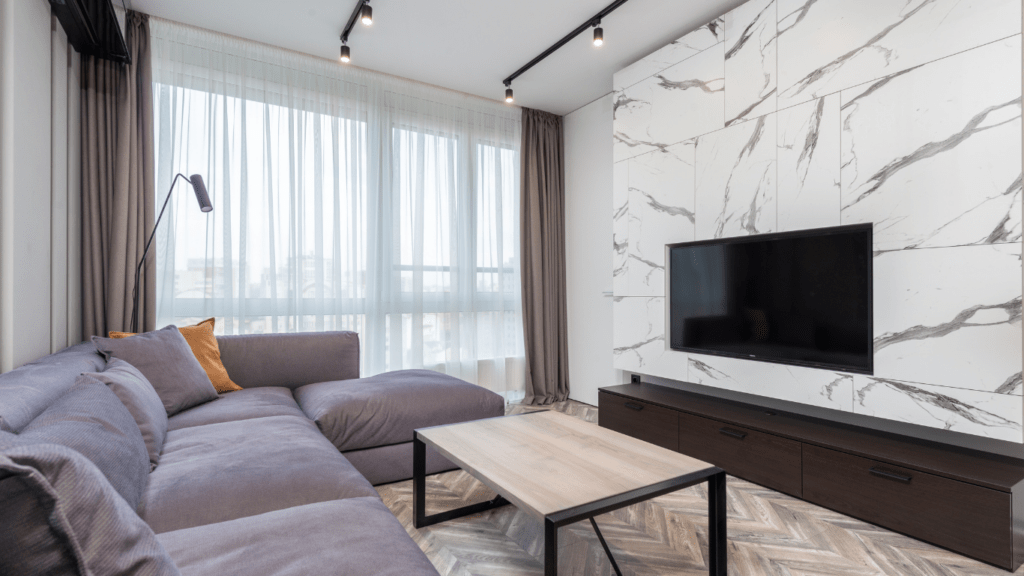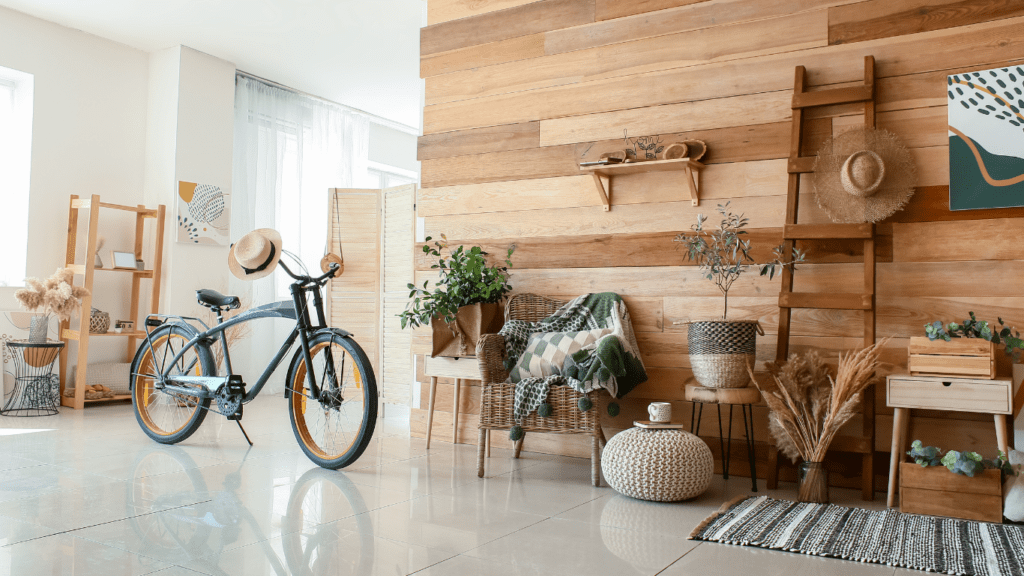What Are Accent Walls?
Accent walls are single walls in a room designed to stand out from the others by utilizing unique colors, patterns, or textures. These walls draw attention and add visual interest, serving as a focal point for the space. Unlike uniform room designs, accent walls create contrast, breaking monotony and bringing depth to interiors.
Options for accent walls include bold paint colors, wallpaper with intricate designs, wood paneling, or even stone textures. For example, a deep blue or emerald green wall provides drama, whereas a wall covered with floral wallpaper introduces patterns. Each choice helps highlight the functionality or aesthetic theme of the room.
Placement is key to an effective accent wall. Ideal candidates are walls behind beds, sofas, or fireplaces, where the natural focus of the room aligns. Strategic use of accent walls elevates room features while maintaining balance in the overall design.
Benefits Of Adding Accent Walls
Accent walls elevate home interiors by introducing depth and character to a space. They go beyond aesthetics to offer practical and expressive benefits.
Creates Visual Interest
Accent walls immediately draw the eye, breaking monotony and giving rooms a focal point. Bright colors like emerald green or textures like exposed brick can emphasize specific design elements. This makes spaces feel curated and intentional.
Enhances Room Dimensions
Accent walls create the illusion of expanded or focused space. Horizontal stripes make rooms look wider, while darker shades on one wall add depth. These design choices manipulate perception, enhancing the overall layout.
Showcases Personal Style
Accent walls provide a platform to reflect individuality. Custom wallpaper, bold paint, or reclaimed wood highlights personality while complementing decor. This approach transforms spaces into unique and meaningful environments.
Choosing The Right Accent Wall

Identifying the best accent wall begins with assessing the room’s features. By analyzing size, colors, and textures, I ensure the design aligns with the space’s aesthetics and function.
Considering Room Size And Layout
Room dimensions heavily influence accent wall choices. I choose patterns or colors that complement smaller rooms by creating an illusion of space, such as lighter hues or subtle stripes. In larger spaces, I opt for bold or dark tones to add coziness and counterbalance openness. The layout determines the wall’s placement, prioritizing walls that don’t disrupt flow but enhance focal points, like those with natural lighting or architectural details.
Selecting Complementary Colors
Harmonizing accent wall colors with existing palettes enhances cohesion. I typically pull tones from furniture, decor, or flooring to maintain balance, such as using navy blue if there are matching cushions or rugs. Contrasting colors work when I want the wall to stand out dramatically, but I avoid clashing shades that may overwhelm the space.
Exploring Textures And Materials
Textures and materials introduce depth to accent walls. I consider options like brick veneer for industrial styles, wooden panels for warmth, or metallic finishes for modern aesthetics. For easier changes, removable wallpapers with intricate details or geometric designs offer flexibility. The material’s durability and upkeep also factor into my decision, balancing style with practicality.
Popular Accent Wall Ideas
Accent walls come in various styles, adding both personality and distinction to a room. From bold colors to natural textures, there’s an option for every design preference.
Painted Accent Walls
Painted accent walls provide a simple yet powerful transformation. Using bright or dark tones, like navy or mustard yellow, can create strong contrasts, while soft hues, such as sage green or blush pink, add subtle elegance. For dynamic visuals, geometric patterns or murals make excellent choices.
Wallpapered Accent Walls
Wallpapered accent walls introduce intricate designs and patterns. Floral prints, geometric accents, or textured styles like grasscloth elevate aesthetics. Peel-and-stick wallpaper serves as a flexible option for temporary or evolving decor needs.
Wooden Accent Walls
Wooden accent walls bring warmth and texture to any room. Options like shiplap, reclaimed barn wood, or vertical slats work well to enhance rustic or modern themes. Stained, painted, or even unfinished wood panels fit different styles seamlessly.
Brick Or Stone Accent Walls
Brick or stone accent walls offer timeless charm and rugged texture. Exposed brick pairs well with industrial or urban interiors, while stone tiles or veneer blend with natural or earthy designs. Using faux materials can achieve similar effects at a lower cost.
Tips For DIY Accent Walls
Creating an accent wall on your own adds a personal touch without professional costs. Follow these tips to ensure a smooth project and standout results.
Essential Tools And Materials
Having the right tools and supplies is critical for a successful DIY accent wall. I recommend preparing these items:
- Paint Supplies: Brushes, rollers, painter’s tape, and a drop cloth for painted walls.
- Wallpaper Essentials: Adhesive wallpapers, smoothing tools, a utility knife, and a ruler.
- Wood Paneling Needs: A saw, nails or adhesive, a level, and a tape measure for mounting planks or panels.
- Surface Prep Tools: Sandpaper, spackle, and a putty knife to clean and repair wall surfaces.
- Protective Gear: Gloves, face masks, and safety glasses to ensure safe handling of materials.
Organizing supplies beforehand saves time and ensures a seamless workflow.
Step-By-Step Guide
Tackling a DIY accent wall involves careful planning and execution. Here’s a clear, step-by-step approach:
- Choose The Wall: Decide the location based on existing furniture or focal points, like the wall behind a bed or fireplace.
- Prepare The Surface: Clean the wall thoroughly, repair cracks or dents, and sand uneven sections to create a smooth base.
- Mark Your Design: Use painter’s tape or a pencil to outline patterns or sections for paint, wallpaper, or panel placement.
- Apply Materials:
- For Paint: Apply primer first, followed by 2-3 coats of paint for a vibrant finish.
- For Wallpaper: Cut pieces to size, align patterns, and smooth bubbles or wrinkles as you go.
- For Panels: Attach planks or tiles using adhesive or nails, ensuring they’re level.
Always pace yourself to prevent errors and check alignment frequently for professional-looking results.

 Kenneths Houstonamic established Mode Key Homes to provide real estate enthusiasts, professionals, and homeowners with valuable insights. His vision drives the platform’s focus on market trends, sustainable housing, and property management, helping readers make informed decisions in the ever-evolving real estate landscape.
Kenneths Houstonamic established Mode Key Homes to provide real estate enthusiasts, professionals, and homeowners with valuable insights. His vision drives the platform’s focus on market trends, sustainable housing, and property management, helping readers make informed decisions in the ever-evolving real estate landscape.